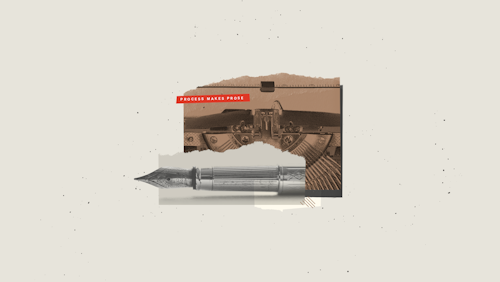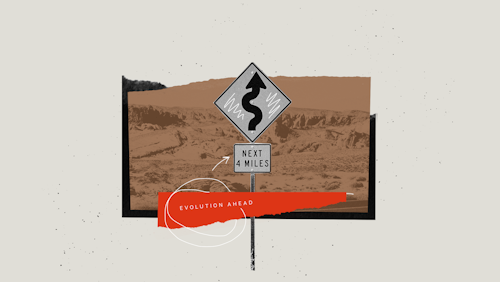Verbal Identity
Verbal Branding: Why It’s The Right Time, Even When Everything Else Isn’t

There’s no business, organization, or initiative that hasn’t been touched by the pandemic. And few customers, users, and partners who don’t care how those brands respond to it. But is it just about a stated response and timely taglines? No. It’s about knowing your customer is in a new story.
Sometimes, we play a game around historic events. The one where we go, Where were you when [insert meaningful incident here]?
The other person is supposed to share, anecdotally, what they were up to that day. The innocuous thing they were doing before. The moment that all changed. The after.
We mean it as a retrospective or an ice breaker or a real talk moment, and no one, once asked, can answer in just a sentence or two. It’s always the prelude to a larger story, in which we are cast (by ourselves, btw) as the main character—hero, villain, innocent, fool. Try to answer without making yourself the center of the tale—assuming you were alive and awake. Impossible, right?
That’s because the question we’re really asking when we play this game isn't Where were you then. It's Who.
For all of us, there's an answer to who we were before COVID-19 and who we are after.
So, as a brand, what's yours?
Before you answer, let's review.
There’s no business, organization, or initiative that hasn’t been touched by the pandemic. And few customers, users, and partners who don’t care how those brands respond to it. Where does that response make itself known? In what brands say.
But is it just about a stated response? A solemn acknowledgment of COVID-19 at the top of every well-intentioned company website? A dedicated page that explores your brand’s mission and values anew? Engaging social posts? Fresh campaigns? Timely taglines?
No.
It’s about knowing your customer is in a new story. One that's still unfolding. One where their needs and pain points have changed, where problems and mindsets and expectations are different. It's about understanding the ground beneath them has shifted—commerce, work, home life, finances, travel, parenting, education—you name it. It's like Frost wrote, Nothing gold can stay.
Your customers are in a new story. If you want them to also be a part of yours, you have to tell a new one.
What you say, what story you tell, and your way of telling it are embodied in messaging and communications, but also in voice, tone, and brand narrative. Together these make up a whole verbal identity. If ever there was a time to deeply consider yours, it’s now.
“Deeply considering” things as a business is probably your new MO. Everything from operations and strategy to economics and personnel has likely gotten the “deeply considered” treatment. You've done more pivots and shifts and turns as a business than a prima ballerina dancing Swan Lake. But rather than yet another daunting task, verbal branding during COVID-19 is an opportunity. A chance to be bold. To lead. A chance to show people exactly who you are.


So, who are you now?
Are you . . .
A brand that’s all about face-to-face service, grappling with quarantines, masks, cashless and zero-touch transactions, deliveries, drive-up pick-up, and plexiglass screens, so you reinvented customer service?
A brand that discovered how to not only optimize remote and distributed teams but to use them to build community and connection? In a way that improves the lives of your employees, partners, and customers and leads the rest of your industry in doing same?
A brand with a product, solution, or service that answers a newly-vital need?
A brand with a product, solution, or service that was languishing or underutilized but now it’s your signature offering and you’ve got a whole new market to tap?
A brand that’s innovated new products or solutions? Forged new partnerships? Recast your mission? Shown up? Opened up? Been seized with new purpose? Done something different? Become something different? Offered something different? Returned to your roots? Put down new ones?
In each of these is the seed of a new story. In verbal branding, we emphasize what's fresh, current, and connected about us. We articulate how a brand engages its customer and solves their problems in a compelling way that goes to purpose and character. Verbal branding is not one campaign or a flurry of trendy messages. It’s a rich and substantial retelling of the work we do, in our singular voice.
The timing for this—as it is for the ballerina, the poet, and the question about historic events—is everything.
Right now, every brand—big or small, start-up to OG—has the chance to introduce or reframe their value. Today, we can be stewards, advocates, or allies—vulnerable, human, and helpful. We can be innovators, leaders, or the steadfast upholders of the values our customers expect, telegraphing comfort and trustworthiness. In essence, our brand can become more fully itself and express that. Why? Because our audience is paying attention. It’s listening.
As our customers reevaluate what they need now and who can give it to them, we can be ready with an answer. We can communicate into the void that COVID-19 has left in its wake, where we’re equal to our competitors in terms of conveying identity, relevancy, and usefulness. We can occupy that void with our story, thanks to verbal branding.
Brands know When they are. It’s time now to say Who.
By any measure, things before/after COVID will have changed, and I believe this [new] brand symbolizes a fresh beginning for us in a meaningful way. In a strange way, it couldn’t have been timed any better.
Jonathan Becker, Founder & CEO, Thrive

